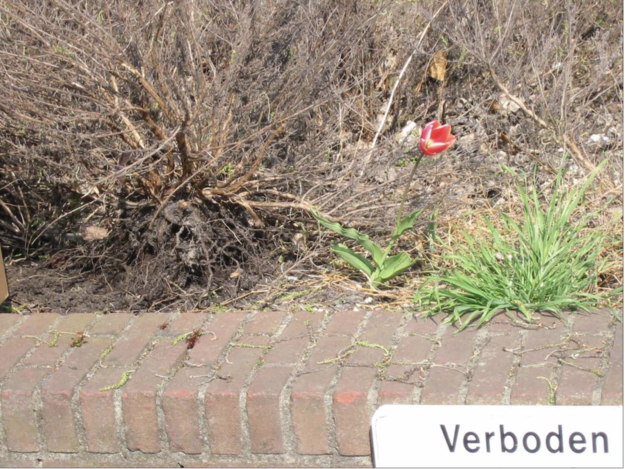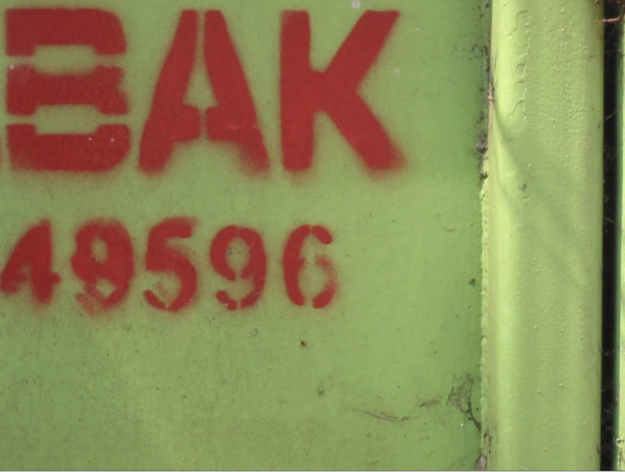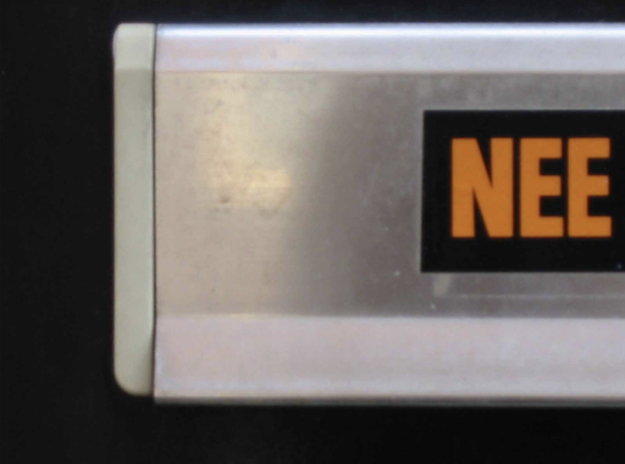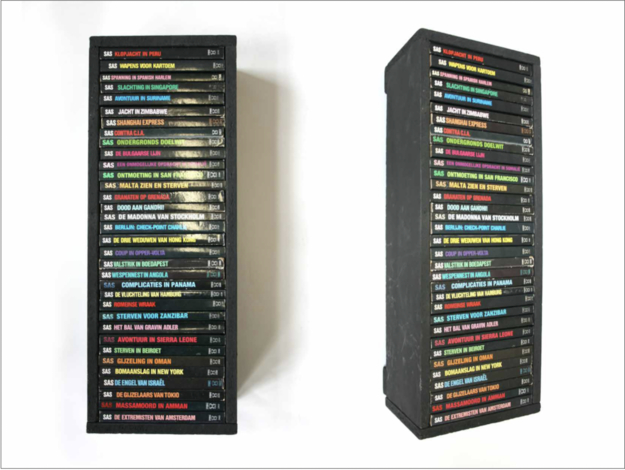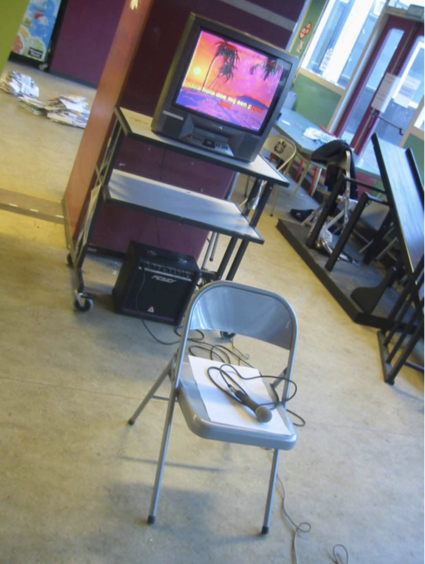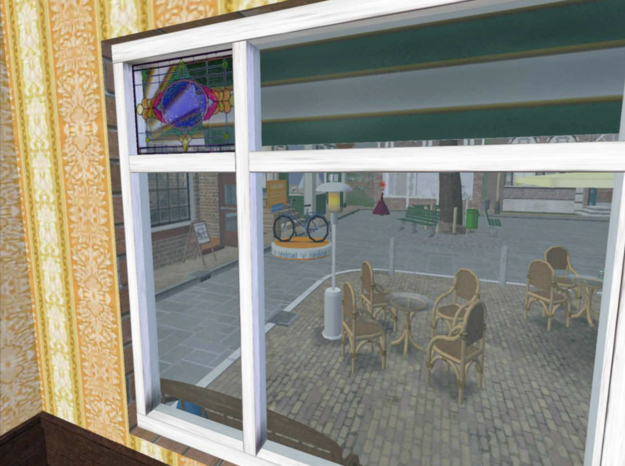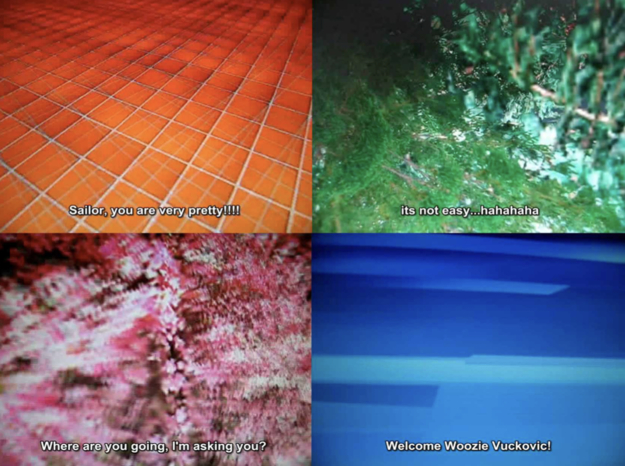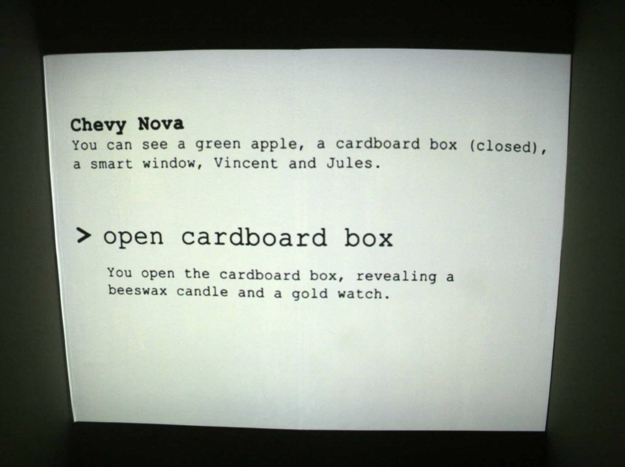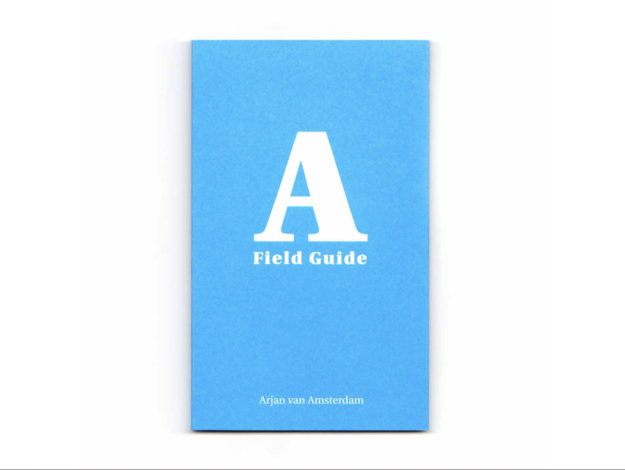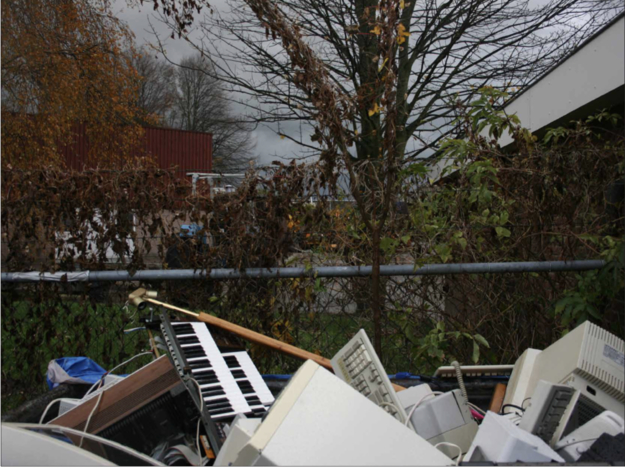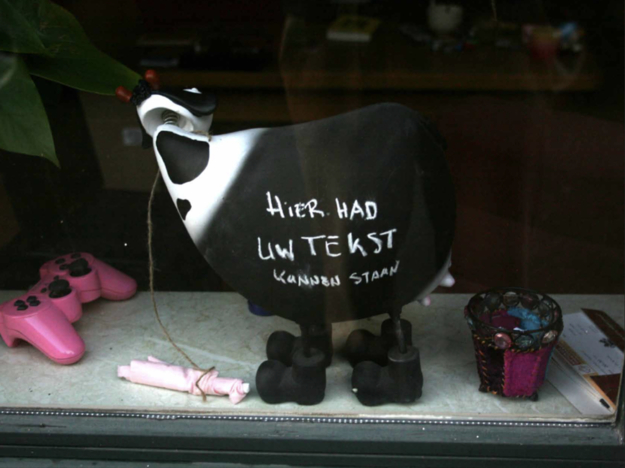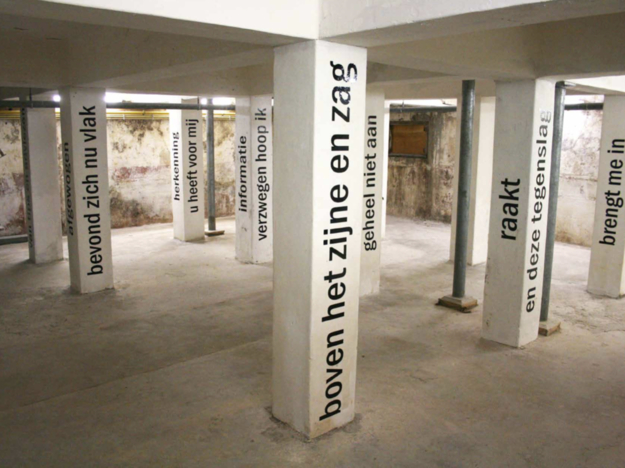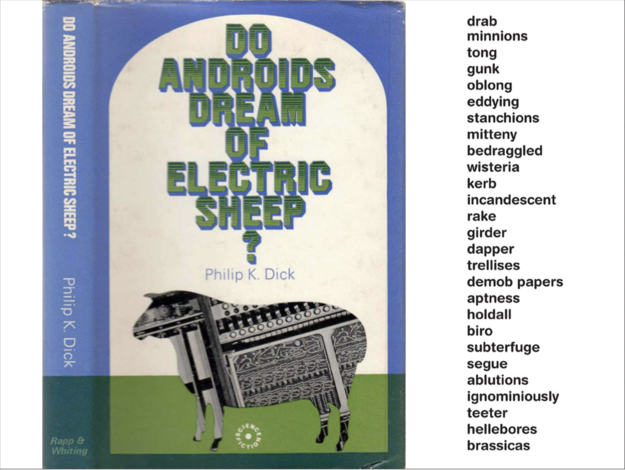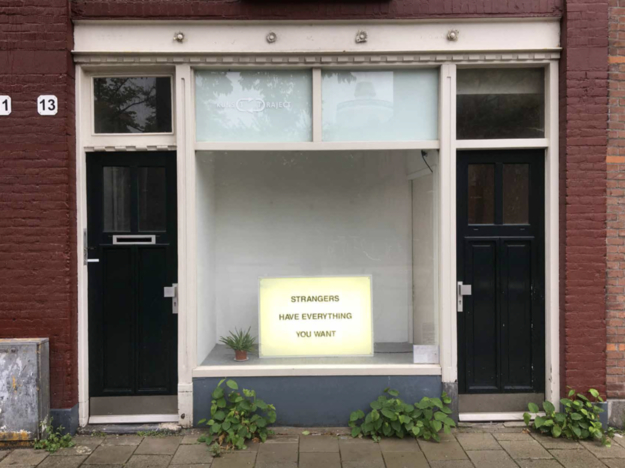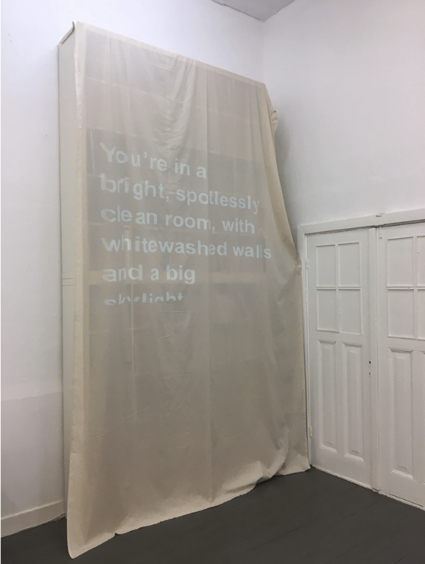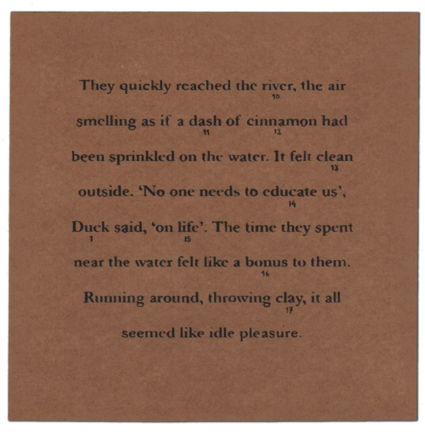From law school to art school
Before becoming an artist, Arjan graduated from law school and worked as a lawyer for a while. However, he realised that this line of work didn’t suit him, so he re-schooled himself in graphic design and applied for the Rietveld academy. To start off his presentation, Arjan showed us some of the photographs he submitted as part of his application. “Looking back at these, I really noticed that there is a lot of text in them.“, Arjan said. “I think that had to do with my previous work as a graphic designer, and also as a lawyer, where you have to interpret texts a lot, too.“
And indeed these photographs zoom in on words “in the wild“ and take them out of context, thereby alerting the viewer to their randomness. For example, a singular tulip is contrasted with the word “verboden“. The word “bak“ on a container humorously states the obvious. In another picture, a sign shows the word “nee“ - “no“ - but it is cut off on the right, a sentence interrupted.
A criminal bookcase
An early text-based work Arjan showed us is a custom bookcase he created for a series of 34 paperback thrillers he found in a cardboard box on the street. “I found it bizarre that someone would just throw them away in a complete set“, he said. “So I created this shelf for them. It’s interesting to see all the titles arranged next to each other like this since they’re all very violent - “ He reads some of the book titles to us: Chase in Simbabwe, Mass Murder in Beirut, and the prescient Bomb attack in New York. The books was published in 1987, well before the terrorist attacks of 9/11, but the work, created in 2005, plays with this context: “You made a skyscraper out of it!“, director Willem pointed out, and Arjan agreed: “Yeah, sort of.“
Karaoke niet ok
The next work Arjan introduced us to highlight the theme of irritation. Arjan, annoyed at the concept of karaoke - people singing usually out of tune and with little feel for the intended rhythm and intonation of a song - created his own, exaggeratedly annoying karaoke song. Using karaoke software, he created a song without rhymes or discernible rhythm, accompanied by his own purposely irritating music. The participant is meant to sit on a foldable chair and sing this song. “I wanted to really convey this feeling of annoyance“, Arjan explained. The work is aptly titled “karaoke niet ok“.
Second nature
We learned that another important aspect of Arjan’s work has to do with online games and interactive fiction. During his time at the Rietveld academy, he experimented with the online game “Second Life“. “Second life“ allows players to create an avatar for themselves, walk around the open in-game world and chat with people, make friends or even date, build yourself a house - in short: have a second life. “It was sort of like an early meta verse“, Arjan explained. While the work he showed us is from 2007, the game is still available to play online today.
In engaging with the game, Arjan first created a series of in-game photography for the magazine “OPEN“, together with artist Sander Veenhof. The images they chose to capture are somewhat abstract, showing largely empty streets, squares and fields as seen through windows, conveying a sense of abandoned in-game architecture.
Arjan elaborated on this work in a film titled “second nature“, which shows only images of in-game nature in “Second Life“, subtitled with recycled captured chats - arbitrary bits of dialogue people typed while playing the game. For example, you see an image of a forest, and under it the text: “It’s not easy…hahahaha“. In taking the text out of context in this way, it is again given an arbitrary and absurd character. Arjan described the film to us as a “naturalistic survey exploring the in-game nature“. This deliberate focus on only the in-game nature, as opposed to showing people, streets and houses, also relates back to the theme of irritation versus peace and quiet which we encountered in karaoke niet ok. In the context of the A/Artist project, a parallel could be drawn to the topic of overstimulation, using art as providing a space free from the irritations of everyday life, or expressly and deliberately exaggerating them.
“Second nature“ was exhibited at Chiellerie, a self-organising gallery in Amsterdam at the time.
Great-Grandfather’s memories
The element of disembodied subtitles found in “Second Nature“ is elaborated on in another work Arjan shared with us, titled “Great Grandfather“ and exhibited at the Oude Kerk in Amsterdam in 2008. It is a short fictional documentary about a great-grandfather looking back on his life and sharing his memories. The footage for this, Arjan shared, he found on the internet, blurring the images in order to preserve a certain vagueness. You do not hear the voice of the great-grandfather, the only sound in the video is melancholic violin music. The subtitles are sentences Arjan added himself, playing with the ideas of truth, memories and their illusiveness - “I was really interested in how far you can go so that people will still believe it. I put some things in there which will make you doubt and hesitate, but you’ll still try to connect the text to the images you see.“
“Does it have to do with your own grandfather?“, Willem asked. Arjan replied that it does not. “It’s just an examination of the concept of memories.“
An interactive fiction
Next, Arjan introduced us to another work from 2008, an installation titled “An interactive fiction“, which he exhibited as part of his graduation. Two screens are displayed on opposite sides of a booth, with a bench in the middle so visitors can choose to watch either one. The videos displayed on the screens are recordings of play-throughs of two different versions of an interactive text-based game (also called 'text adventure'). In this type of game, you read descriptions of scenes, then advance to the next scene using a number of available commands (WALK NORTH / OPEN DOOR / TAKE BREAD etc).
The interactive game displayed in this work was created by Arjan himself, using the software INFORM. One version is based on the plot of Pulp Fiction, while the other is a description of everyday situations. “Why did you choose Pulp Fiction specifically?“, someone asked, and Arjan explained that his main reason was that Pulp Fiction is a 'frame story', consisting of different storylines which might or might not come together.
Sitting inside the booth, visitors had the option to watch either one of the two different gaming sessions. The installation creates a sense of passive suspense: although you are not playing the game yourself, you want to keep watching in order to advance through the scenes. Much like “Second life“, this work plays with the contrast of real versus fictional life, directly juxtaposing the plot of an action movie with trivial everyday events.
A Field Guide (to Meppel)
In the same year, Arjan participated in a residency at KiK Kolderveen, an old dairy factory near Meppel, a small town of thirty thousand inhabitants in the Netherlands. The outcome of this residency was the publication of 'A Field Guide', which Arjan also presented in form of an installation titled “A Field Guide II“.
The idea behind this work was to “translate“ the city of Meppel into an art work, Arjan explained, by collecting images of all the different genres or styles that characterise Meppel as a city. This included many instances of texts in public, such as restaurant menus, busstop schedules, books in thriftstores, advertisements, numberplates, etc, combined with many random shots to get a better feel for the city.
“I just recorded everything I saw, I went into it very open“, he shared.
In their seemingly random nature, these photos are reminiscent of the earlier ones he took for his art school application, also because they once again focus on “floating“ text around Meppel. In conducting this “field work“, Arjan treated the quiet city of Meppel as the setting of an adventure game. The absurdity that is invoked through these decontextualised images and bits of text has an ironic element, which some of the artists pointed out: “Meppel is a very surrealist place, very strange“, Willem joked, and project leader Maartje Koch added: “Have you heard of Meppel’s nickname - Meppel the big apple?“
For the field guide, Arjan sorted the images by genre or style, depending on which category they fit into. Each page consists of an image and a short text Arjan wrote based on it. Each page also notes the GPS coordinates of where in Meppel the respective photo was taken. Arjan then translated this work into a three-dimensional installation in the “cathedral“, the basement of the old dairy factory which is given this nickname due to its pillars supporting the ceiling. Arjan used these pillars in order to visualise his translation of Meppel. He wrote a story using the instances of texts he found around the city and stuck it to the pillars in form of stickers. Since these pillars were not round but square, with four different sides, Arjan was able to fill each side with different text. This way, visitors would read different versions of the story depending on which sides of the pillars they looked at while walking through the space. “There are three different narratives“, Arjan explained, each of which he assigned a different colour during the research phase in order to avoid confusion.
Artists Marna Slappendel and Annelies Wina Doom pointed out that the nature of this work, with its cataloguing and colour-coding, fits quite well into the characterisation of autistic art we discussed during an earlier roundtable.
Do androids dream of electric sheep?
Arjan shared that another text-based work of his was conceived while reading the famous science fiction novel Do Androids Dream of Electric Sheep by Philip K. Dick. While reading, he noticed that as a non-native speaker of English, there were a lot of words he didn’t really understand. Instead of ignoring this and just continuing to read, Arjan made a list of all these unfamiliar words. He then used this list of words to write an alternative first page, not looking up the meanings in a dictionary but instead guessing intuitively where they could be placed in a sentence. He also tried to emulate the original style of the book and created a print of the page, approximating the original layout and font as well. This work confronts the viewer with their own gaps of knowledge, allowing the out-of-context words to hold on to their mystery and non-meaning.
“Strangers have everything you want“
Arjan encountered this sentence while listening to a self-help podcast. Fascinated by it he thought of the best way to display it as an artist, together with friend and collaborator Annelies Wina Doom. They settled on text on a lightbox, which was displayed in an otherwise empty window as part of the Kunsttraject Staatsliedenbuurt in 2019. This sign was also lit at night, but worked with a timer, flickering on and off from time to time.
“It has to do with social media or pinterest“, Annelies explained: “places where people share images with “inspirational quotes“ like this. People are always busy thinking about other people, and it’s a bit of a wink in that direction.“ Arjan stressed that another fascinating aspect of the work is that people could and did interpret the sentence in many different ways.
On the one hand, seeing this light box in a stranger’s window while walking down the street would remind passersby of the common and uncomfortable sentiment that the grass is always greener on the other side; that other people’s lives are much more exciting or fulfilled than their own. On the other hand, it also has a positive interpretation: It is good and important to meet new people, because they can provide you with knowledge and opportunities you would never have found otherwise.
To me, the work feels reminiscent of “Second Life“, which offers both an escape from the shortcomings of “boring“ real life and a confrontation (or fruitful exchange) with virtual strangers.
You Never Cared for Sundays
For another work, Arjan reflected on the novella The Stranger by Albert Camus. The book famously opens with the main character thinking about his mother’s passing - he’s not quite sure if it happened today, or in fact yesterday. Camus himself summarised the message behind the The Stranger as follows: "In our society any man who does not weep at his mother's funeral runs the risk of being sentenced to death.“, adding: “I only meant that the hero of my book is condemned because he does not play the game.“ Arjan explained that he felt that the central character in the novella was pushed along his path by societies’ demands and accusations, while in truth he just desired to be left alone. “This interpretation might have to do with myself as well“, he admitted. “I am also often looking for peace and quiet.“ In response, Arjan decided to focus only on descriptions of nature and background - the sun, the sky, the colour of the walls - in The Stranger, extracting them and creating a parralel narrative detailing everything but the plot of the novella.
The work was projected on a wall, covered by a translucent white curtain, which further symbolises the sense of removedness the work is trying to convey.
The title is “You never cared for Sundays“, which refers to a sentence from chapter 2 of the novella: I remembered it was a Sunday, and that put me off; I’ve never cared for Sundays. It thereby directly addresses the seemingly impassive narrator, offering him a sense of understanding, and, in its omission of the foreground story, respite from the tensions of societies’ demands. At the same time, it provides respite to readers as well - from the societal critique which makes reading The Stranger so uncomfortable. Arjan projected his alternative story onto a wall, covered by a translucent white curtain, which further symbolised the sense of removedness the work is trying to convey.
This work again relates back to Second Nature in that it shifts the focus from society and people to the supposed background of nature. It also plays with the same themes of irritation versus peace and quiet as 'Karaoke niet ok' does. Similar to Do androids dream of electric sheep, it also draws on an existing literary text and subverts it.
Duck and Puppy - text-based crypto art
Finally, Arjan shared some of his most recent work with us. A couple of years ago he became interested in NFTs and crypto, a complex topic which he explained to us in one of our previous roundtables. He also started to create text-based work with this. “When you start a wallet“, he explained, “you get a number of words, either 12 or 24, and those are your private keys. I thought it would be interesting to use these words and make a short story out of them.“ That is exactly what he did for the work “Duck and Puppy“.
Text and visual thinking
After the presentation, someone asked where Arjan’s evident fascination with text originated. “Did you read a lot as a child?“
“Not that much“, Arjan replied. “I don’t know exactly where it came from.“
Director Willem Velthoven ventured a guess: “You graduated from law school before all this, and I think that has a lot to do with it. When you study law you have to take texts very seriously. Arjan agreed: As a lawyer, you have to study texts laboriously and interpret them in very precise and detailed ways.
“But looking at your work - “, Willem continued, “That’s such a different way of looking at texts - so that must have been difficult, I can see why you didn’t want to be a lawyer. You look for meaning that is not exactly in the text, play the words you don’t understand, and so on…“
Annelies added: “By doing that you create images without showing them, that’s one thing I really like about it.“
Arjan agreed that a lot of his work, despite being largely text-based, is very visual to himself. “That’s also why I found the book Visual Thinking by Temple Grandin very interesting“, he said. “Since it explains how different people look at text and made me realise that not everyone sees pictures all the time.“ In our previous roundtable discussing this book, guests all filled out a questionnaire meant to evaluate the extent to which you are a visual thinker, and Arjan had scored quite highly on this test.
Randomness and rules
Artist and long time friend of Arjan's Luciano Pinna commented on the interplay of randomness and rules in Arjan’s work: “In one way you have this formalised structure or recipe, collecting coordinates and text in space which you translate into a graphic or put in a book in a structured way, but I think randomness also plays a big part.“
Arjan agreed that creating a framework such as the one he used for 'A Fieldguide' is like giving himself permission to do something, opening up more possibilities within the framework. “If you don’t have any rules then I don’t know where to start, it becomes too difficult. You need some kind of limitation.“
Artist Jenny Konrad contributed a fitting metaphor: If you want to have a playground, you first need to design the playground. You create rules for yourself first, knowing that you can also always break them. Rules are like crutches: they help you to walk until you no longer need them.
To me, it seems that in Arjan’s work, the rules within which the work operates only serve to heighten the effect of exposing the randomness of the often free-floating text they highlight.
